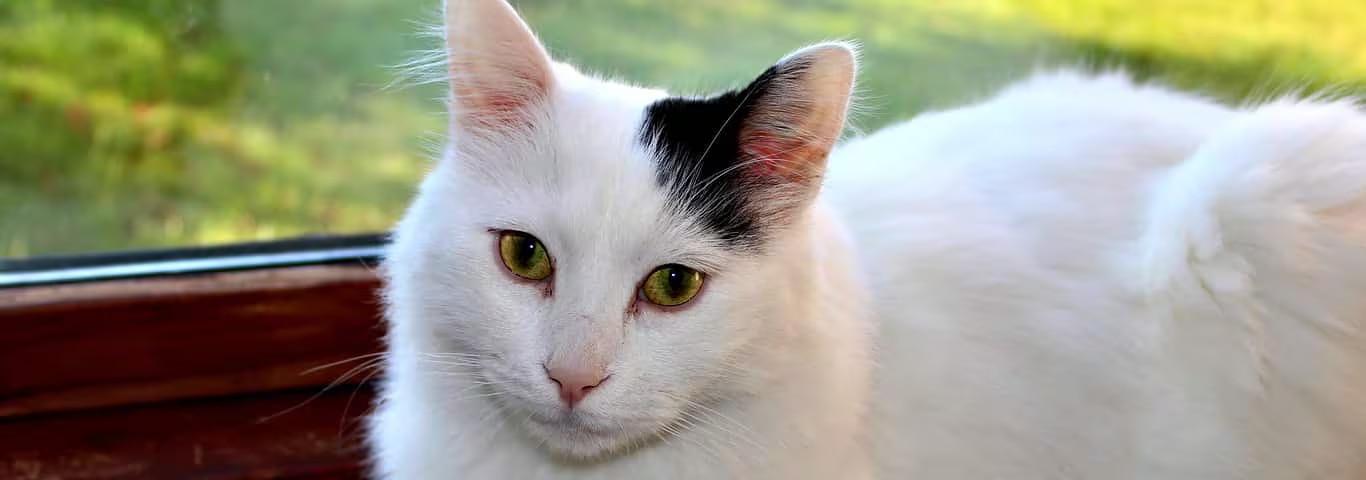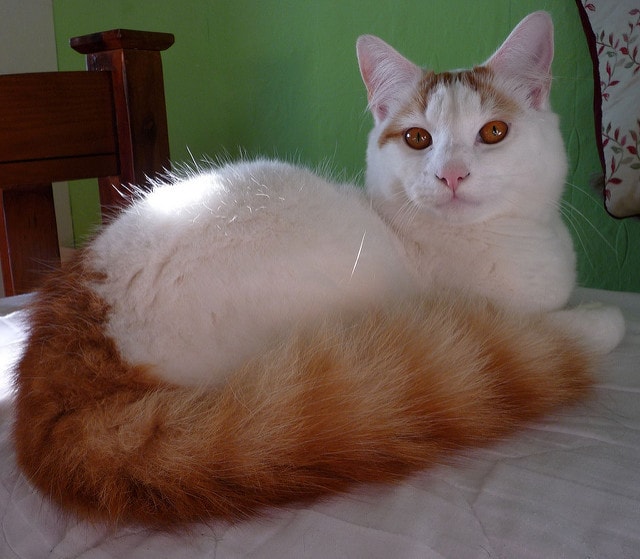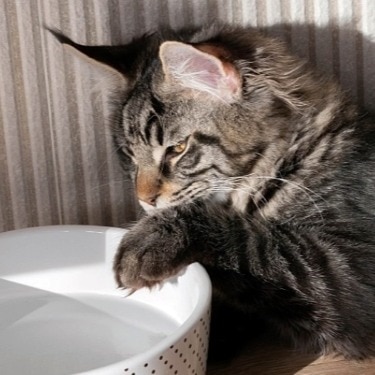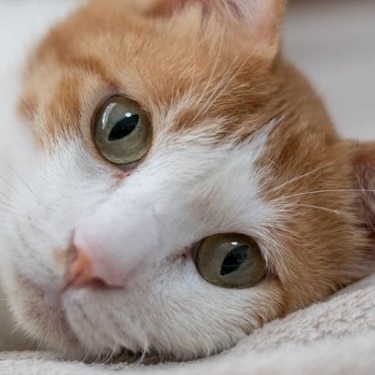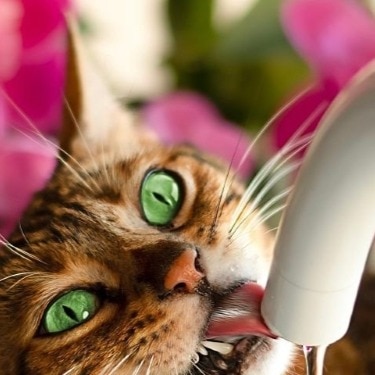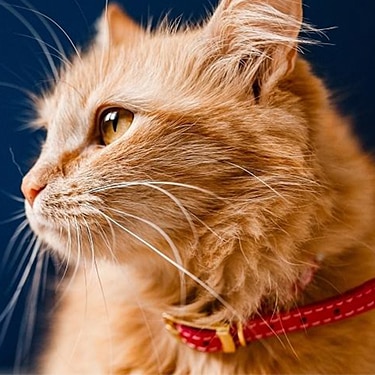The Turkish Van cat is a large, highly energetic animal with no genetic predisposition toward medical issues. She demonstrates her athletic prowess both on land and in the water. While most cats run at the first sight of water, the Turkish Van is a strong and capable swimmer, earning this breed the nickname "The Swimming Cat." This is one aspect of the Turkish Van cat
The Turkish Van cat personality is best described as energetic, playful and fun-loving. She requires a lot of attention from her pet parents, so she's the perfect match for those who have a lot of time and love to share with their fur baby. She's also a jumper, as The International Cat Association (TICA) explains: "Their powerful hind legs mean they are great jumpers and climbers so expect to find them atop the bookcase or in some other aerie they have located as a great place to ensure they can see everything going on in their world." This breed can learn to fetch, says, TICA, and you may even see them "catch toys in mid-flight or turn somersaults in their enthusiastic chases" around the house.
Although the Turkish Van can be a great roommate choice for a dog, you'll want to have a meet-and-greet before adopting this breed into a family with young children, and there should be supervision. Turkish Vans like to be cuddled and held on their own terms, though not for long periods of time, and while they're loving cats, they aren't very tolerant of people tugging at their tails or trying to pet them.
Lively and social, the Turkish Van is highly intelligent and requires regular exercise and playtime to thrive. This breed can also get itself into mischief, with a particular fondness for knocking items off shelves and tables, notes Vetstreet: "It is not known for being a floor cat, preferring to be at the top of everything, watching the happenings below. High energy paired with a love of high places makes the Van a bit careless when it comes to ornaments you might find valuable but which the Van finds to be simple obstructions." You'll want to keep plenty of toys (DIY cat toys are always fun) around the house in order to take her attention away from your valuables and onto the mouse.
These furry friends are low maintenance and benefit from a regular hygiene routine that includes claw trimming, teeth brushing, and healthy meals, and combing (once a week should be all that's needed, as her luxurious coat is not prone to matting). This breed's love of swimming does not translate, however, into a love of taking baths. In that sense, the Turkish Van is much like other cats in that she'll make bath time difficult. Fortunately, she does not require regular bathing.
The Turkish Van cat is a rare breed that dates back to ancient times. The name is derived from the use of the term "Van" in its countries of origin (Iraq, Iran, and portions of the Soviet Union and Turkey), explains the Cat Fanciers' Association (CFA). It's "a common term in the region that has been given to a number of towns, villages and even a lake—Lake Van," says the CFA, "so it is no surprise that the uniquely patterned cat native to the region was named the 'Vancat' by the residents." The Van is not to be confused with the Turkish Angora, which is an entirely separate breed.
Making its home in the mountainous region of central and southwest Asia, historical records show that the strong and rugged Turkish Van has been around for nearly five thousand years, with its isolation contributing to its lengthy lifetime, points out TICA. It is a treasured breed in its homeland, especially those Vans who have a smallish, colored marking on their necks, called the "thumbprint of Allah."
It wasn't until the 1950s that the first Turkish Van was brought to Europe by two photographers who were gifted a male and female cat, and it was the late '70s when the breed made its way to the United States. The Van began receiving club recognition in the '80s and '90s, charming its way into the hearts of cat lovers across the globe.
Because she is such a rare breed, a Turkish Van cat may be difficult to locate, but not impossible. If you're lucky enough to share a home with such a beloved and treasured furry friend, you'll be rewarded with a playful, energetic and loyal companion.
Adopt a pet. Change a life.
Are you prepared to adopt a pet? Use these tools to make sure you are ready for the commitment.
Adopt a pet. Change a life.
Are you prepared to adopt a pet? Use these tools to make sure you are ready for the commitment.












